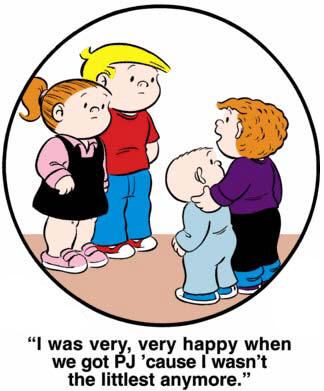|
|

Personality Development
A Brief Introduction to Personality Development
Personality is the visible aspects of one's physical, mental, emotional, and social character that make them unique from other people. A person's personality is an embodiment of a collection of qualities, behaviours, and patterns of thought and emotions which governs their principles, beliefs, and expectations. There are many potential factors that are involved in shaping and developing a personality. Often, personality development depends on the hereditary factors and past experiences from the environment. As a person develops, personality becomes influenced and often changed by future experiences such as societal rewards and punishment. This is why students with behavioural difficulties are sometimes capable of improving their responsiveness to classroom rules, simply through positive reinforcement on behalf of the teacher. This includes, always treating the student with respect; keeping the lines of communication open; and engaging in and model active listening (Auger & Rich, 2007). Understanding one?s own personality preferences and learning about the rich diversity of the many other types plays a vital role in educating. Although actions do speak louder than words, sometimes actually hearing about a student?s strengths and learning what kind of work they might enjoy doing helps to guide teachers to significantly more effective educational strategies than they could have arrived at by relying on conventional approaches.
Birth Order
Birth order is defined as one's rank by age among his/her siblings. It can have a major effect on how a person sees them self and can sometimes have a lasting effect on their personality development. Every child fights for a role within the family, almost as if they have their own little niche to protect at home. Alfred Adler was one of the first psychiatrist to suggest that birth order influences personality. He insisted that birth order provokes a lasting impression on an individual's lifestyle and their ways of dealing with friendship, love, and work (Adler, 1964). According to the book Problems of Neurosis (Figure 1), Adler mentions how firstborns are "dethroned" from their assigned or earned position in the family when a second child is born . Younger and only-children may be pampered and spoiled, which can also affect their later personalities (Adler, 1964).

Figure 1. Front cover of the book: Problems of Neurosis, By: Alfred Adler.
There are many typical characteristics that are similar amongst children in a particular birth order. First-born children are usually responsible, dominant leaders, need affection and praise for the work they do, may be prone to jealousy and insecurity, and concerned about performing well for others. Research also shows that first-born children are more likely to go to college than children in any other position in the family (Price, 2008). This suggests that they are also high achievers. Second-born children are normally independent, adventuresome, rebellious and envious, and often the opposite of the first-born. The last born child may be more irresponsible and may take longer to grow up. They are secure and confident, happy and free spirited. An only-child is usually more mature, responsible, and has difficulty sharing. Because they are always around their parents, they grow up in an adult world, like adult company, and in turn, their language is more refined. An only-child expects nothing less than the best when it comes to doing well at school or when making friends. Additional birth order factors like spacing in years between siblings, the total number siblings, and the families culture may also influence these characteristics.

Figure 2. A cartoon depicting the effect of birth order on siblings.
An educator can use this knowledge in the classroom to meet the needs of each student. When assigning group work or a particular group-based seating plan, a teacher can personally assign the groups according to each student's birth order. For instance, rather than organizing a group of all first-born children, who usually take on the role of dominant leaders, groups can be a mixture of students of different birth orders. This way the students within each group can get along better and show greater flexibility towards the needs of their peers. If a group of three students contains a first-born, second-born, and an only-child, the first-born can take on the role of leader, the second-born will organize the information, and the only-child can mediate the group since they are typically more mature and responsible. Organizing groups like this can be useful in multi-age or split-grade classrooms because the scheme keeps the teacher and the students on track in terms of what will happen at various times during the day (Auger & Rich, 2007). First-born children take satisfaction in being praised for the work they do and they feel upset when it goes unnoticed. Teachers should, therefore, regularly motivate their pupils and provide feedback for the work they complete. Even a simple 'Thank you, that was very good' from the teacher can bring satisfaction to a student seeking for teacher approval.
This knowledge will also provide teachers a better idea on how to approach a student's parents, especially during a parent-teacher interview. Usually, parents who bore a single child will depend on their only-child to succeed academically. They constantly exert pressure on their child and expect them to achieve the highest grades in the class; this often makes them feel as if there is "weight on their shoulders." In an interview, a teacher must be cautious in the words they use to describe their outlook on the child, as it may be perceived incorrectly by the parents - offending them. Finally, although it is important for a student to have a good relationship with their teacher, an only-child may prefer adult company over their peers because they may not understand peer behaviour. A teacher knowledgeable in birth order will try to encourage "cooperative interactions", which promotes interdependent goal achievement and peer-to-peer cooperation and communication (Auger & Rich, 2007).
|
|